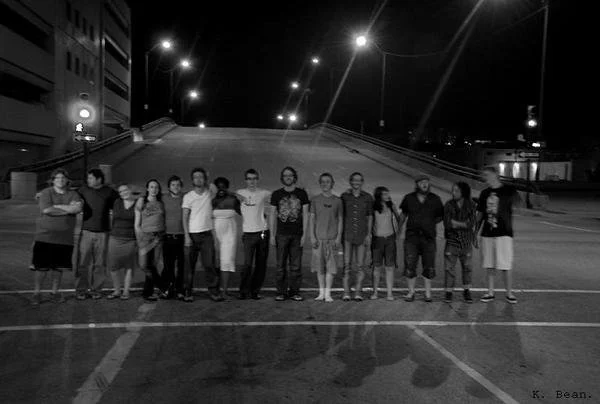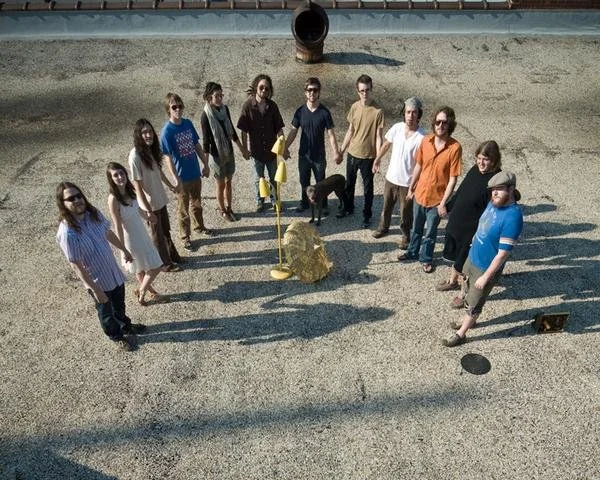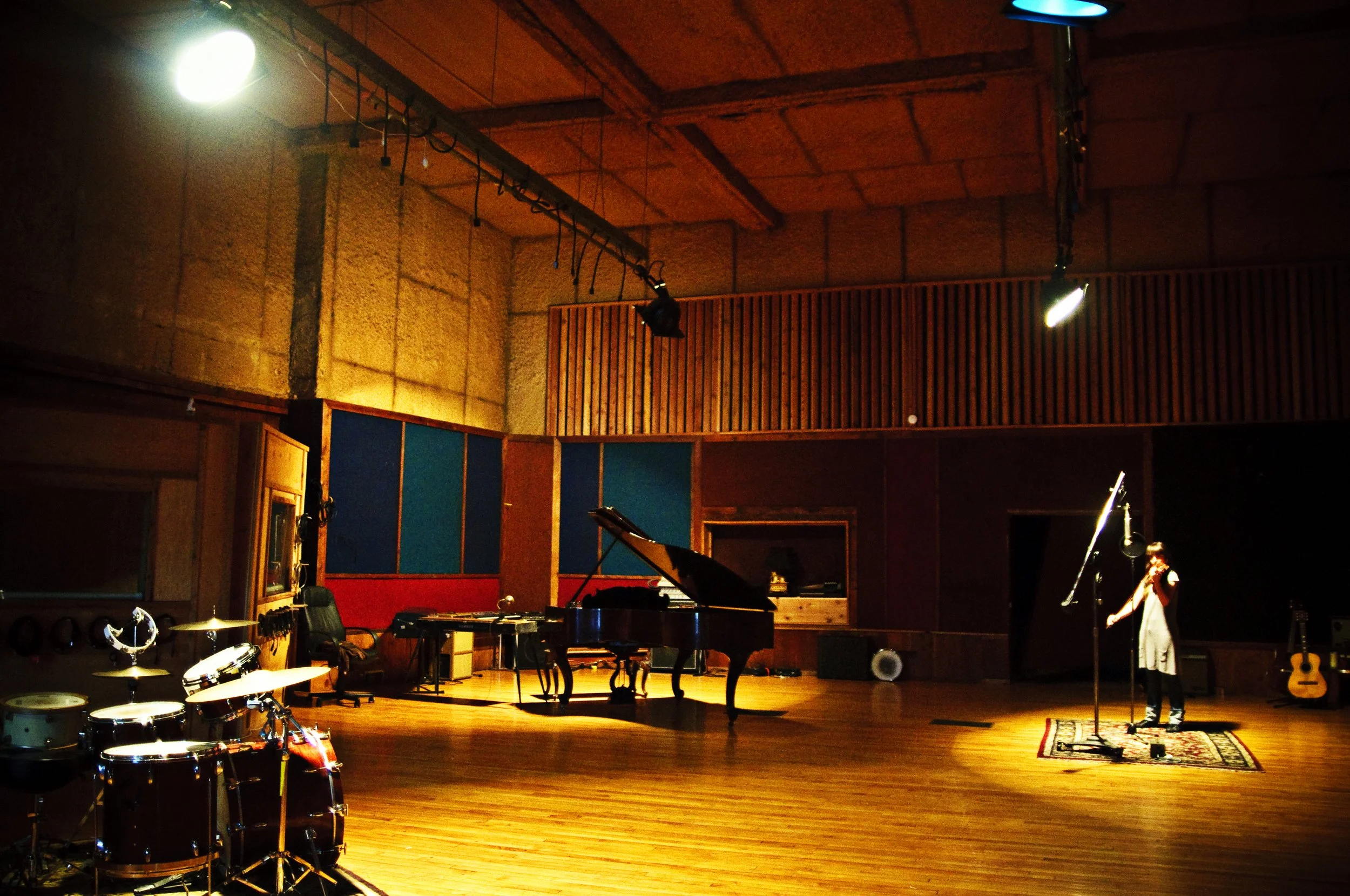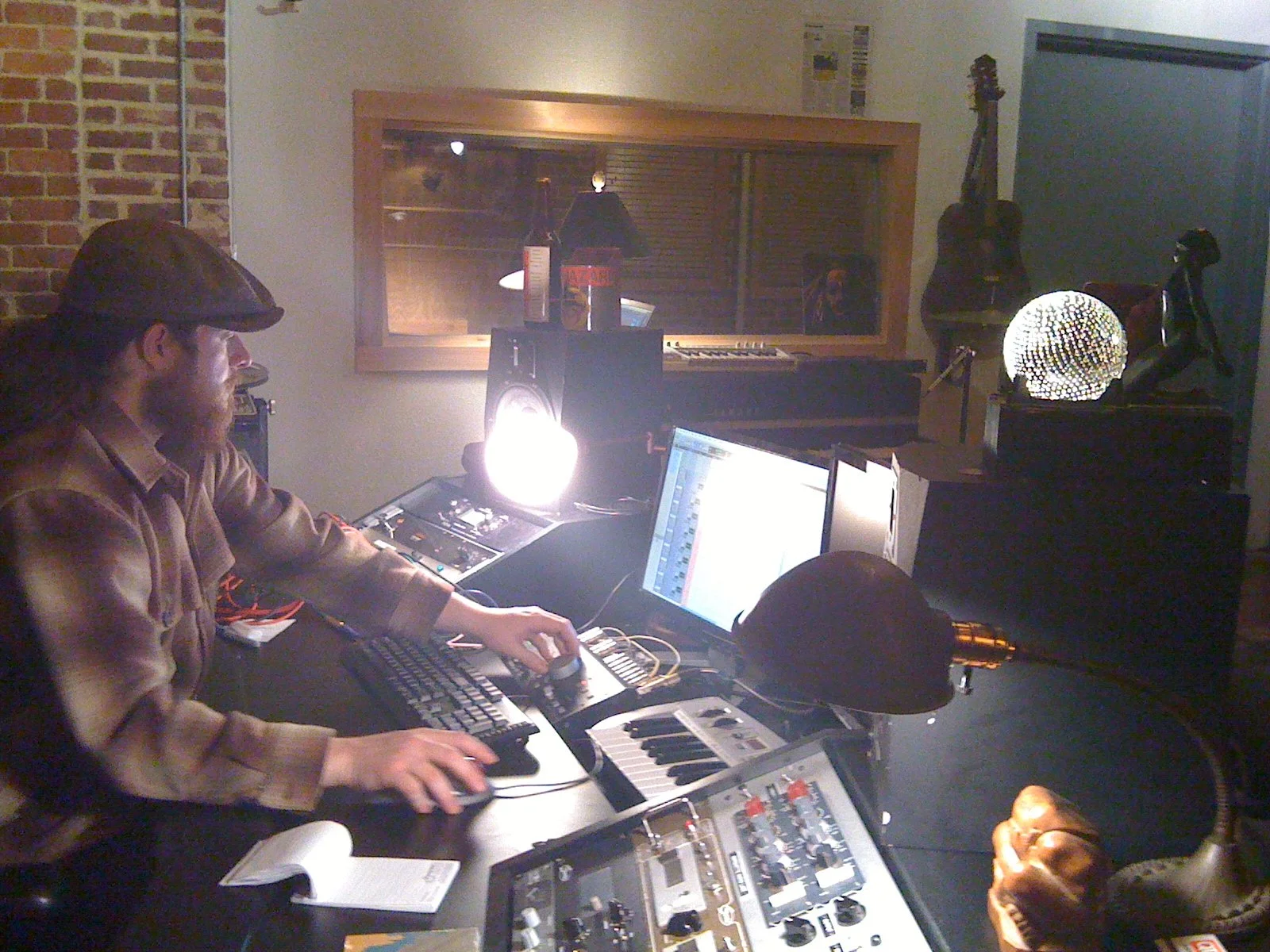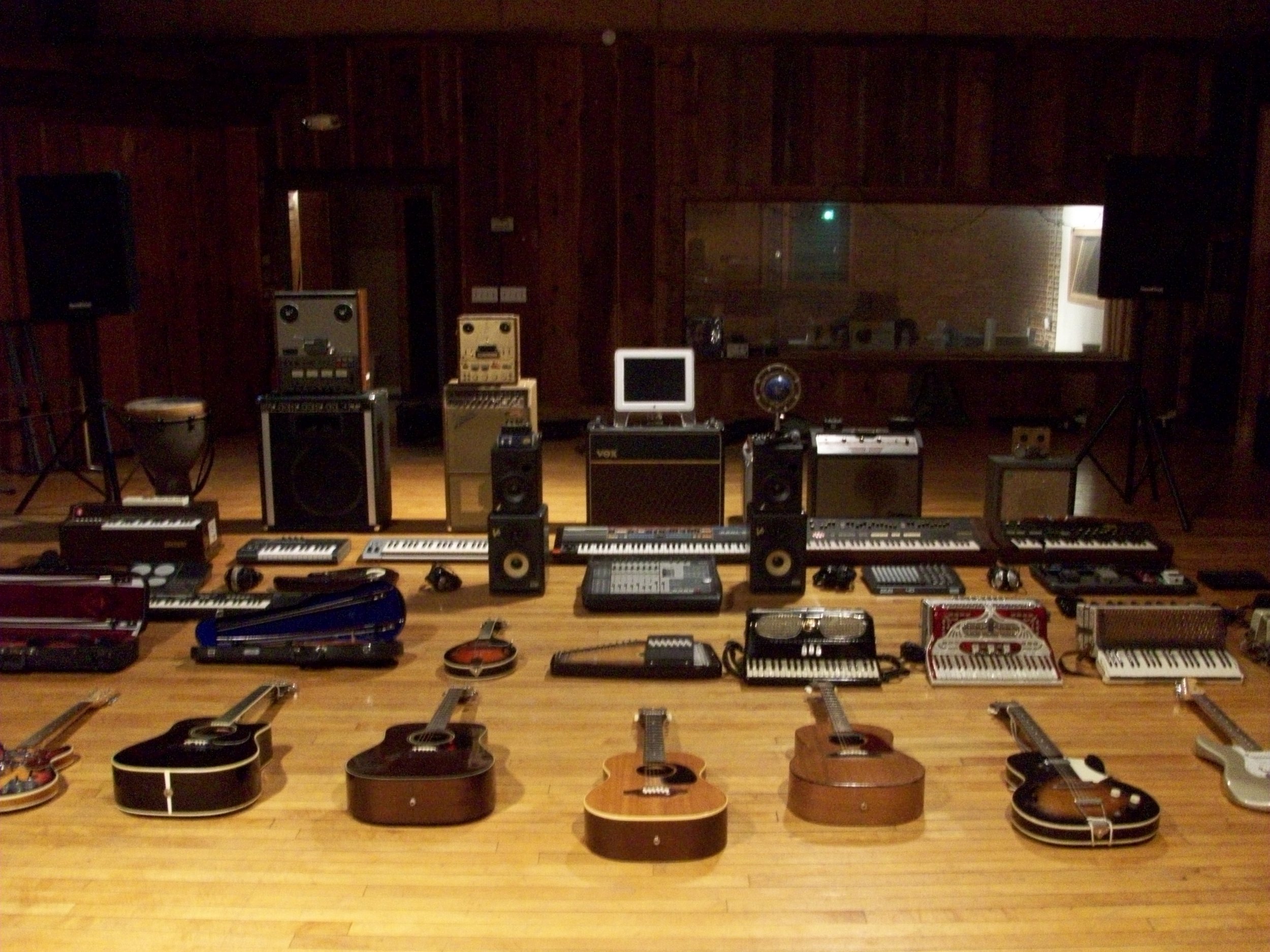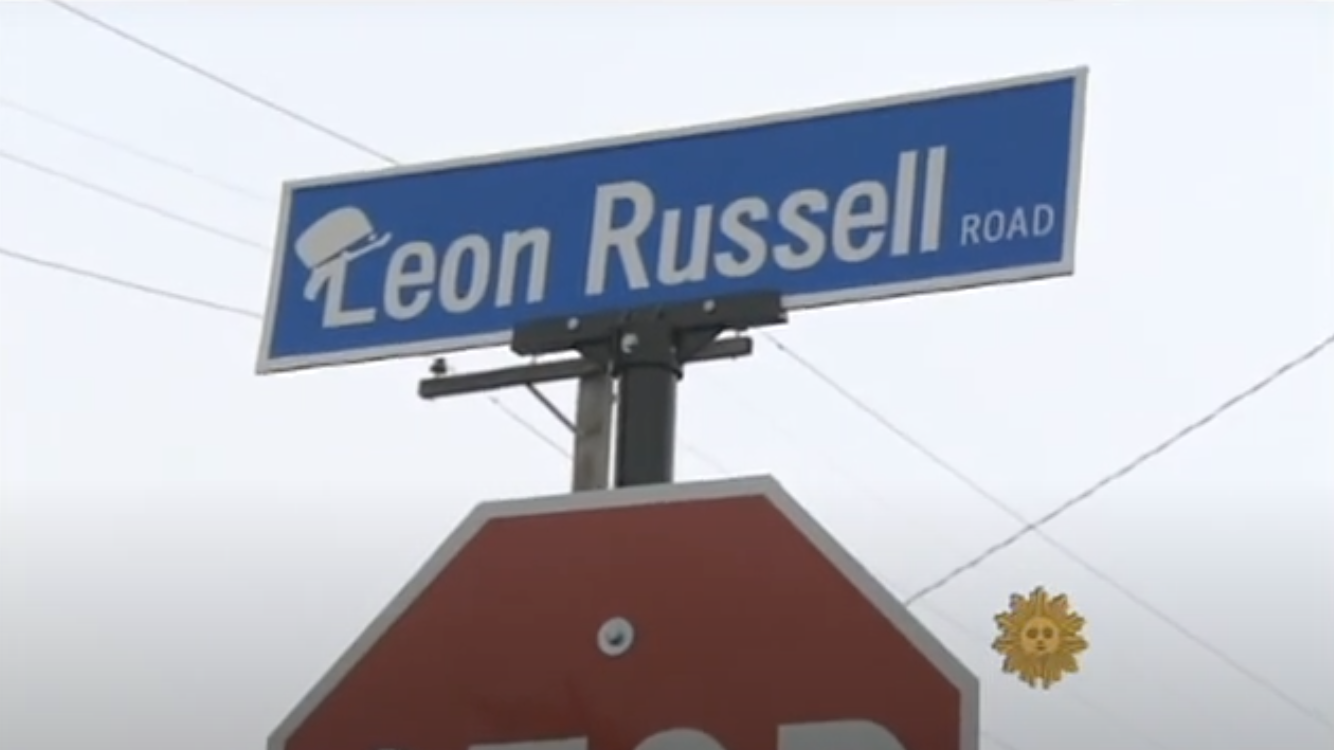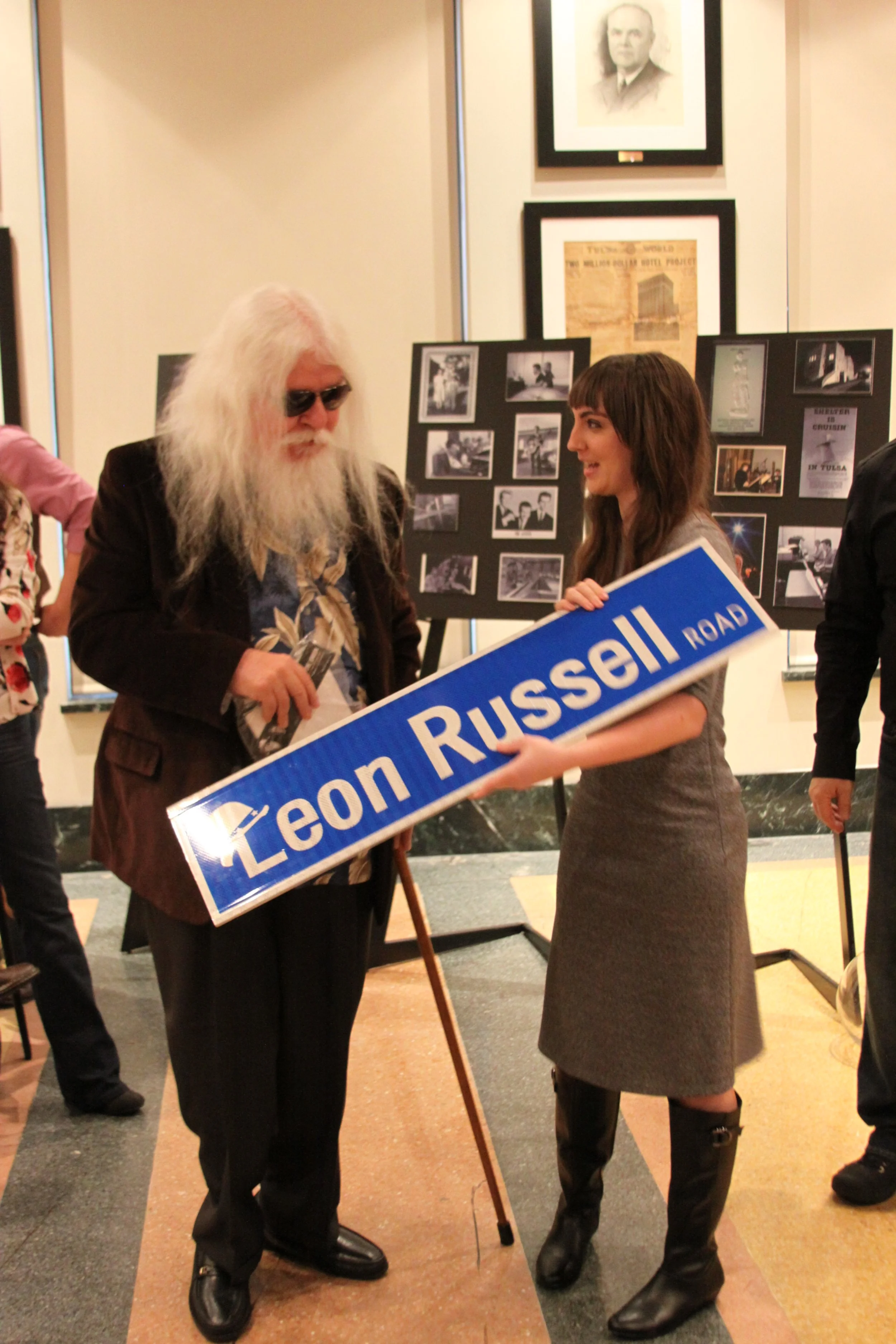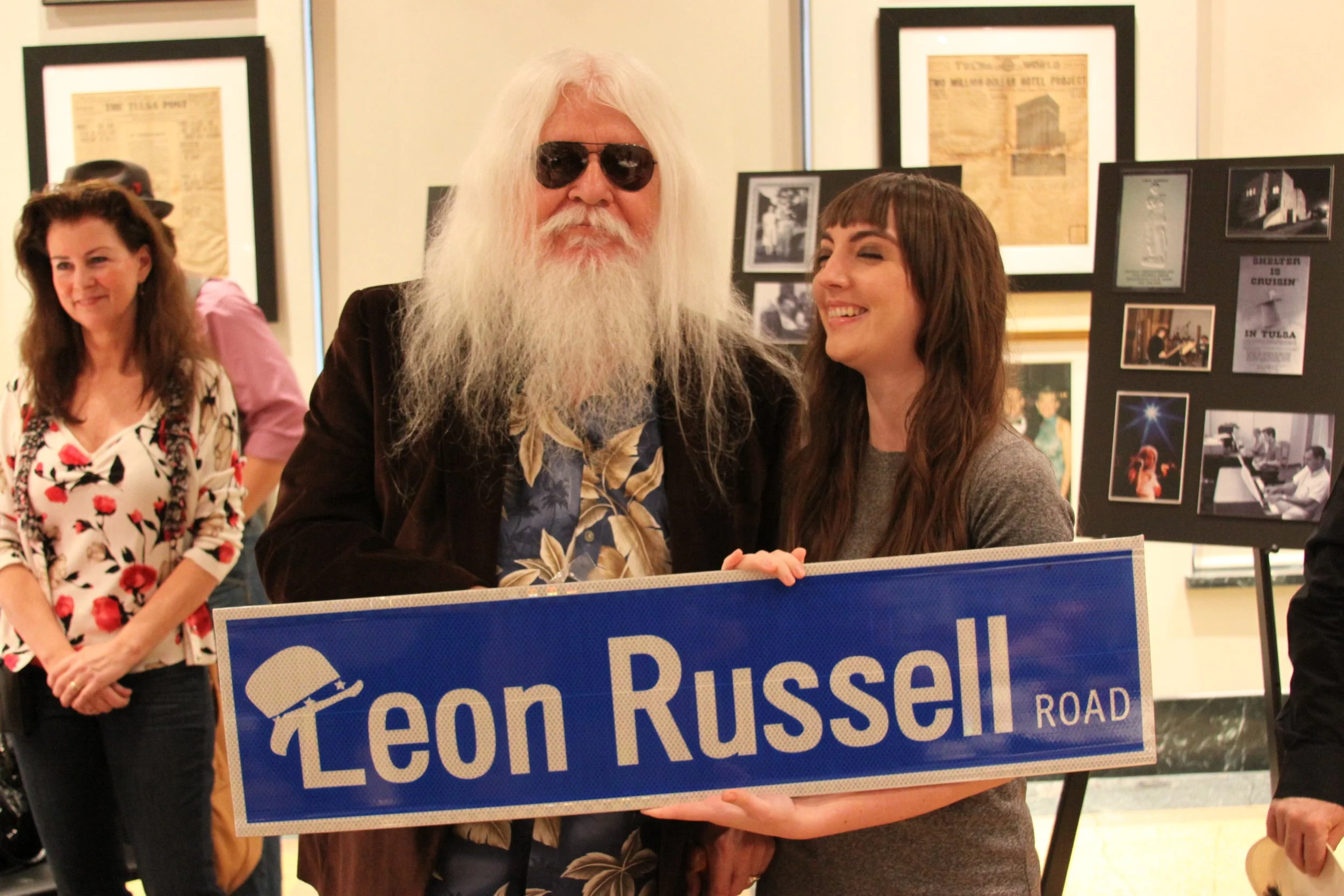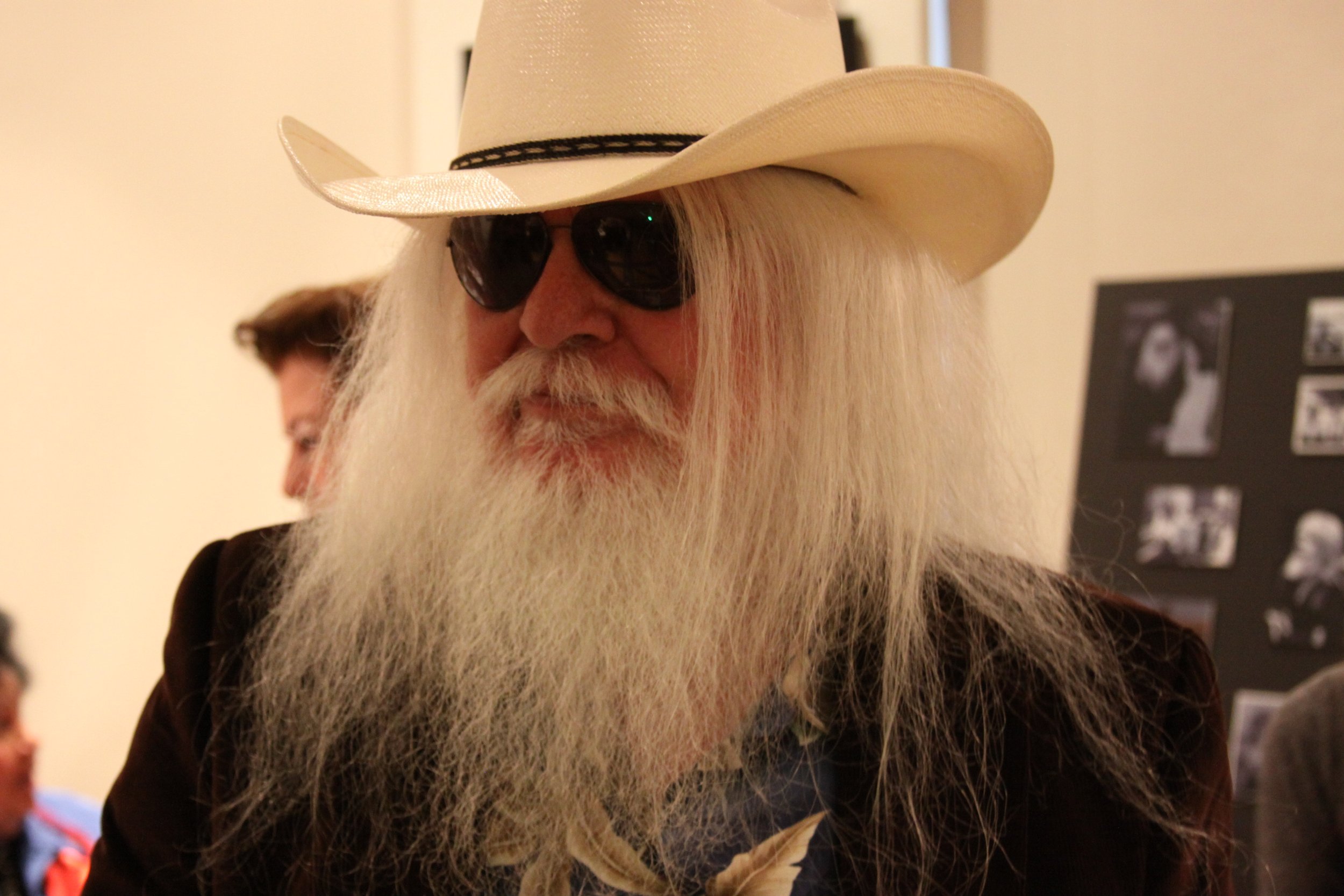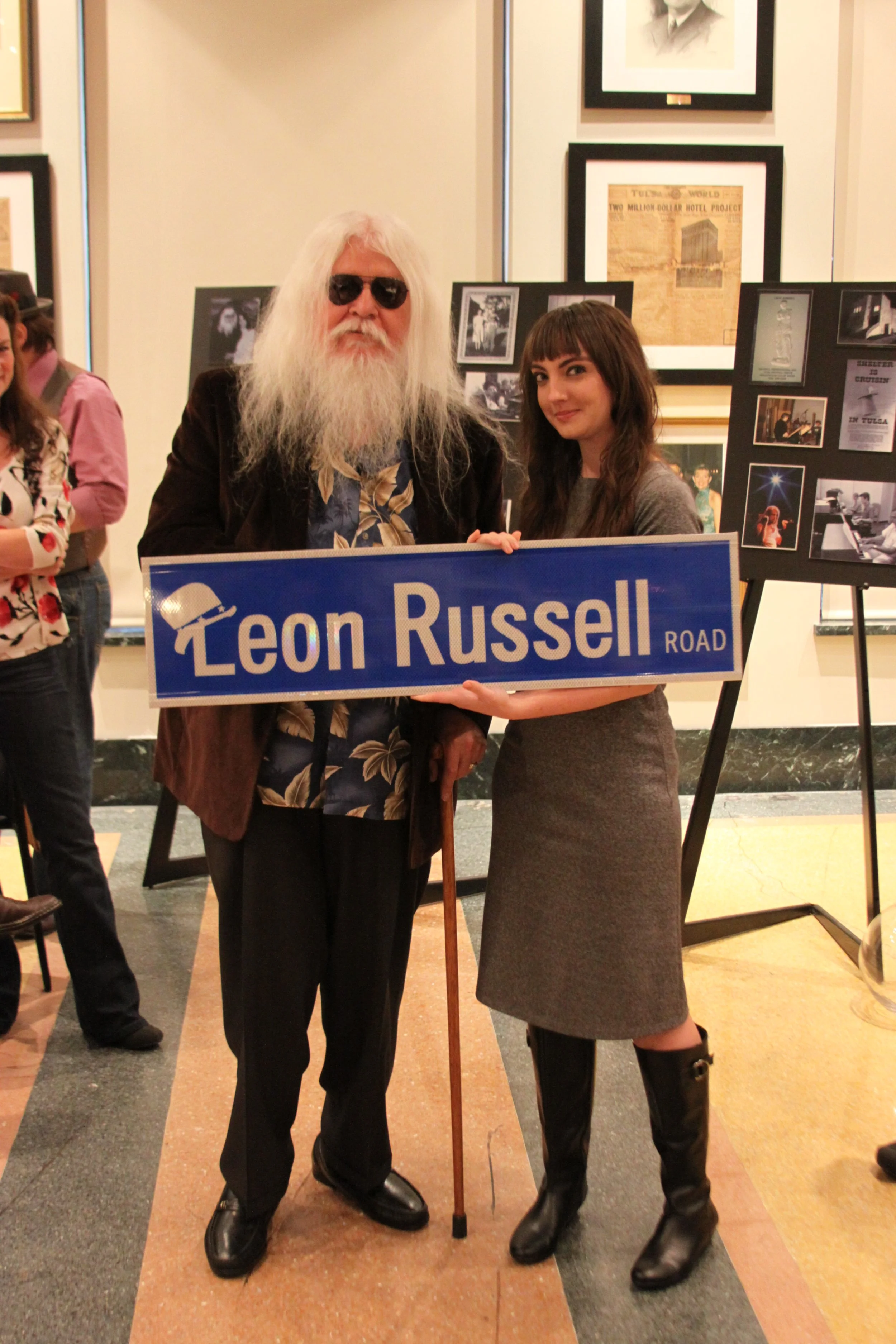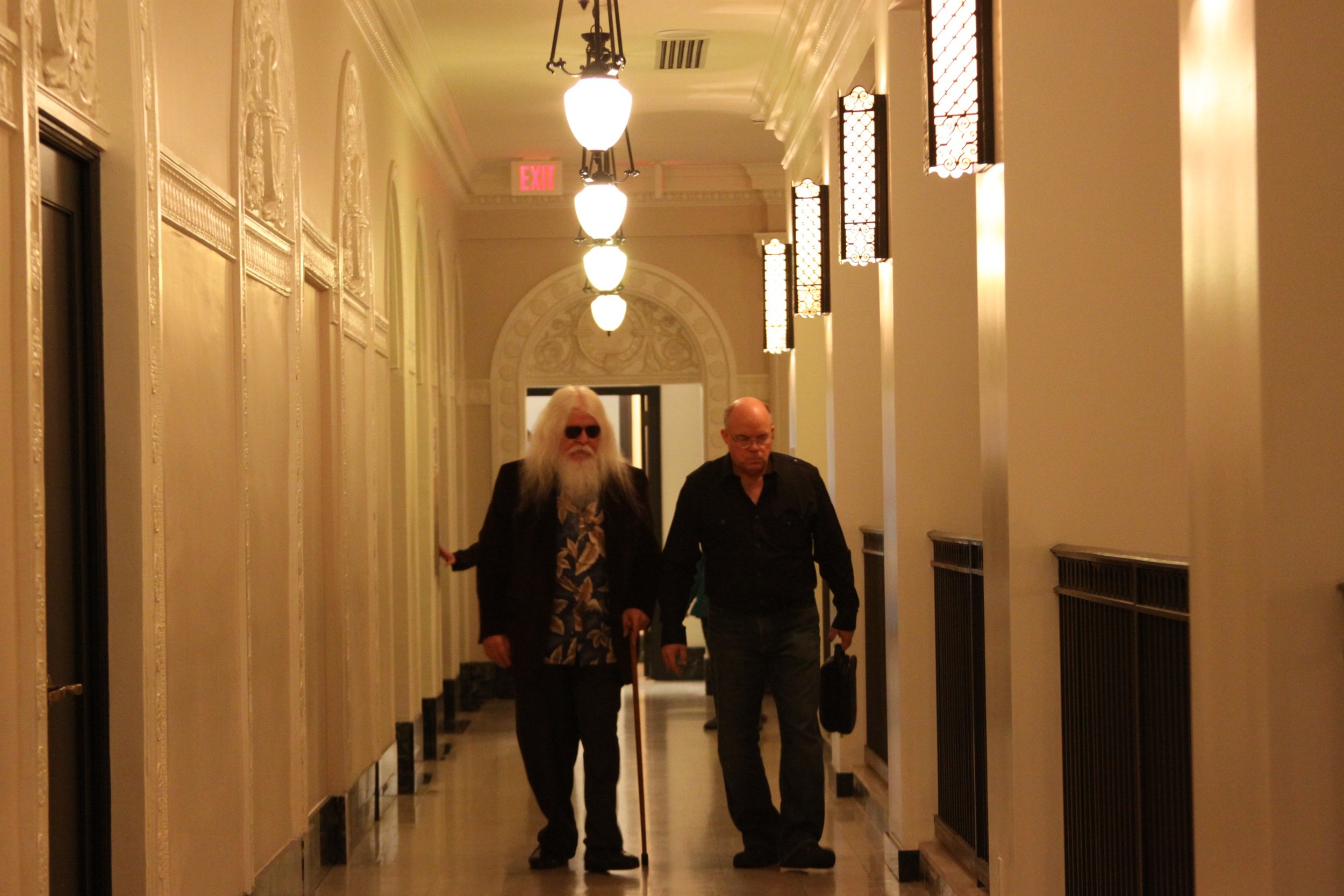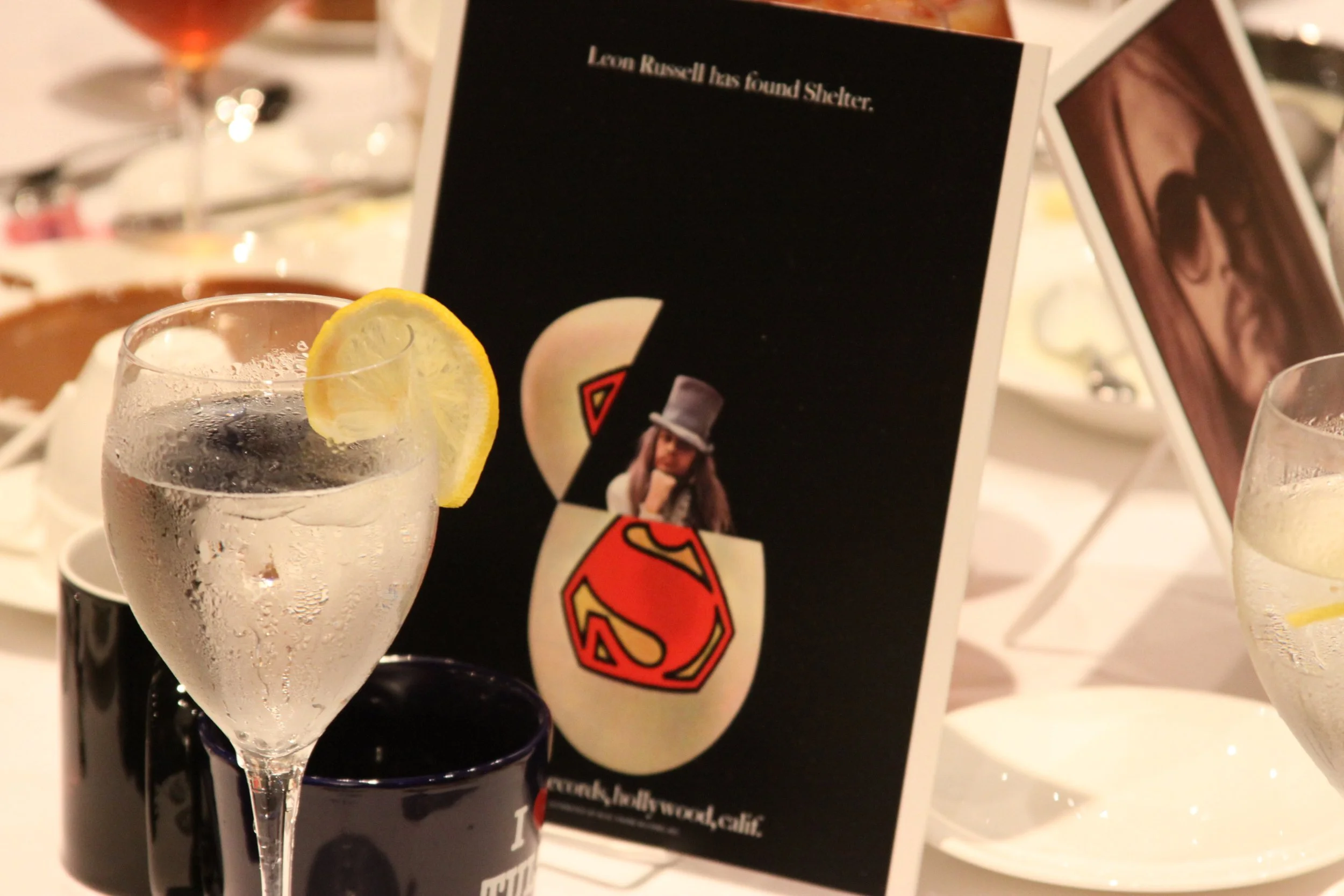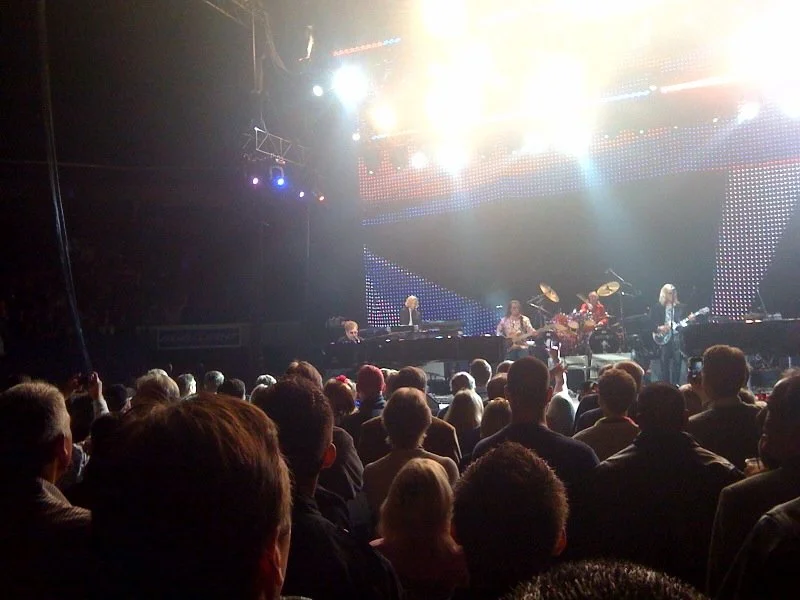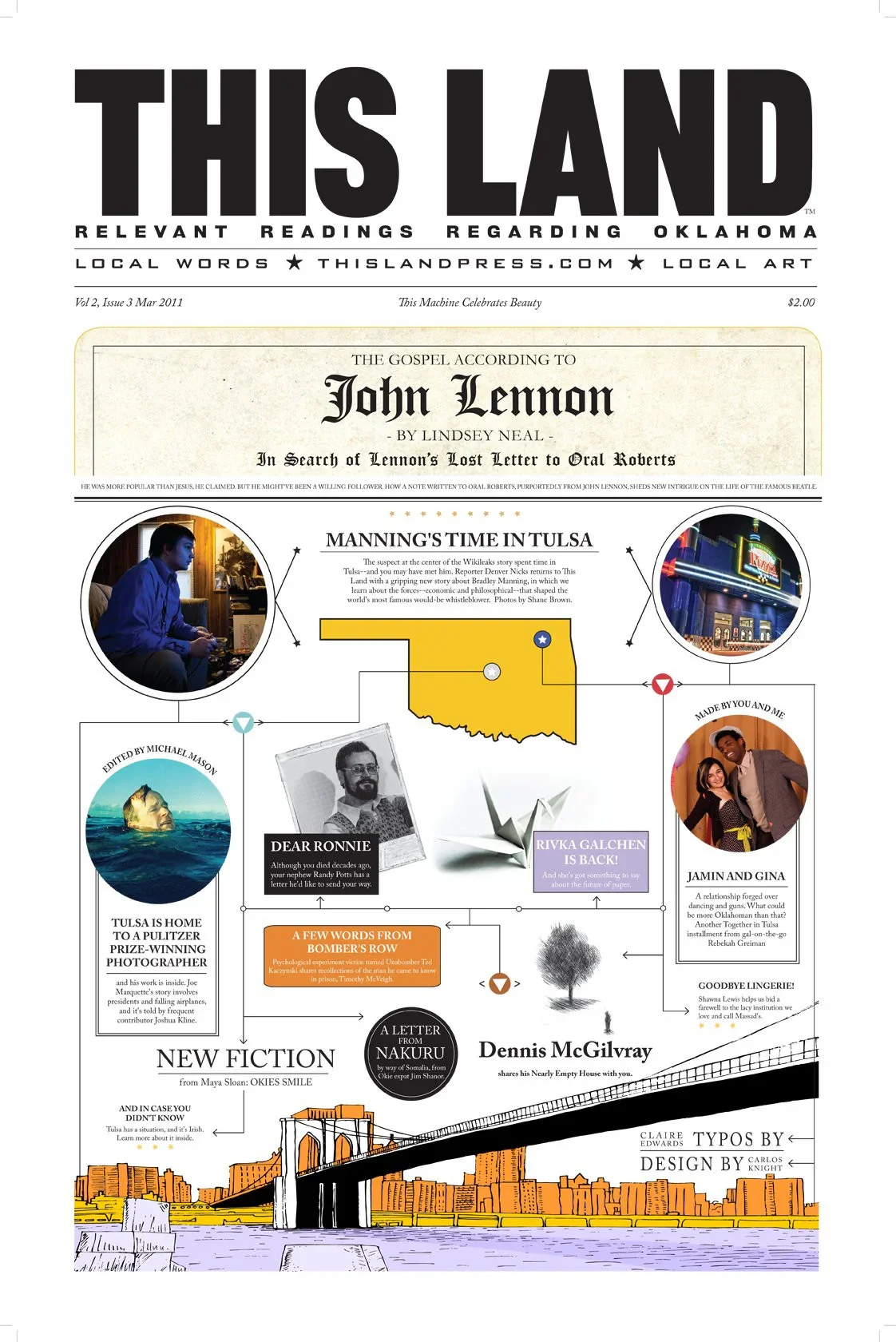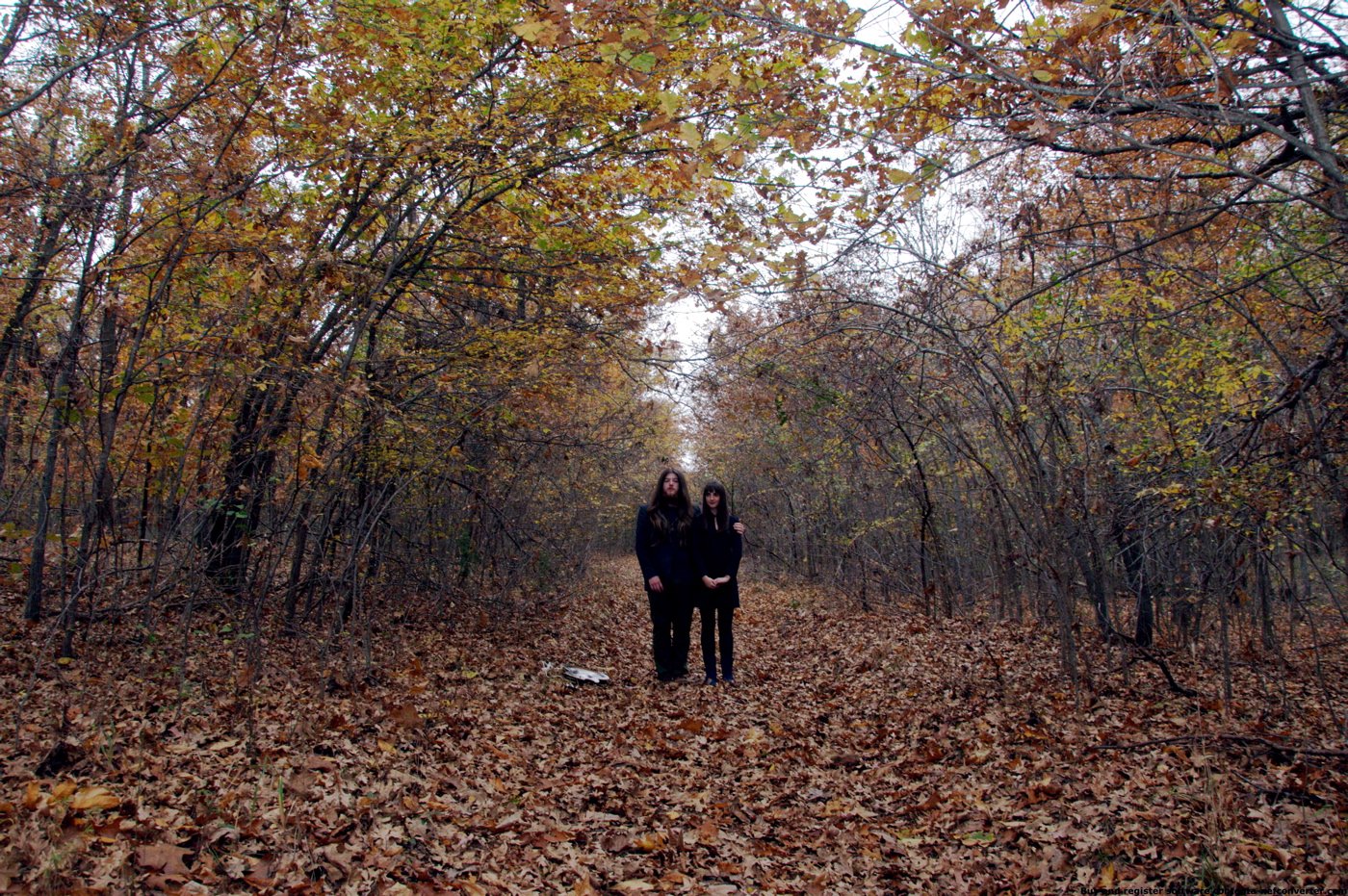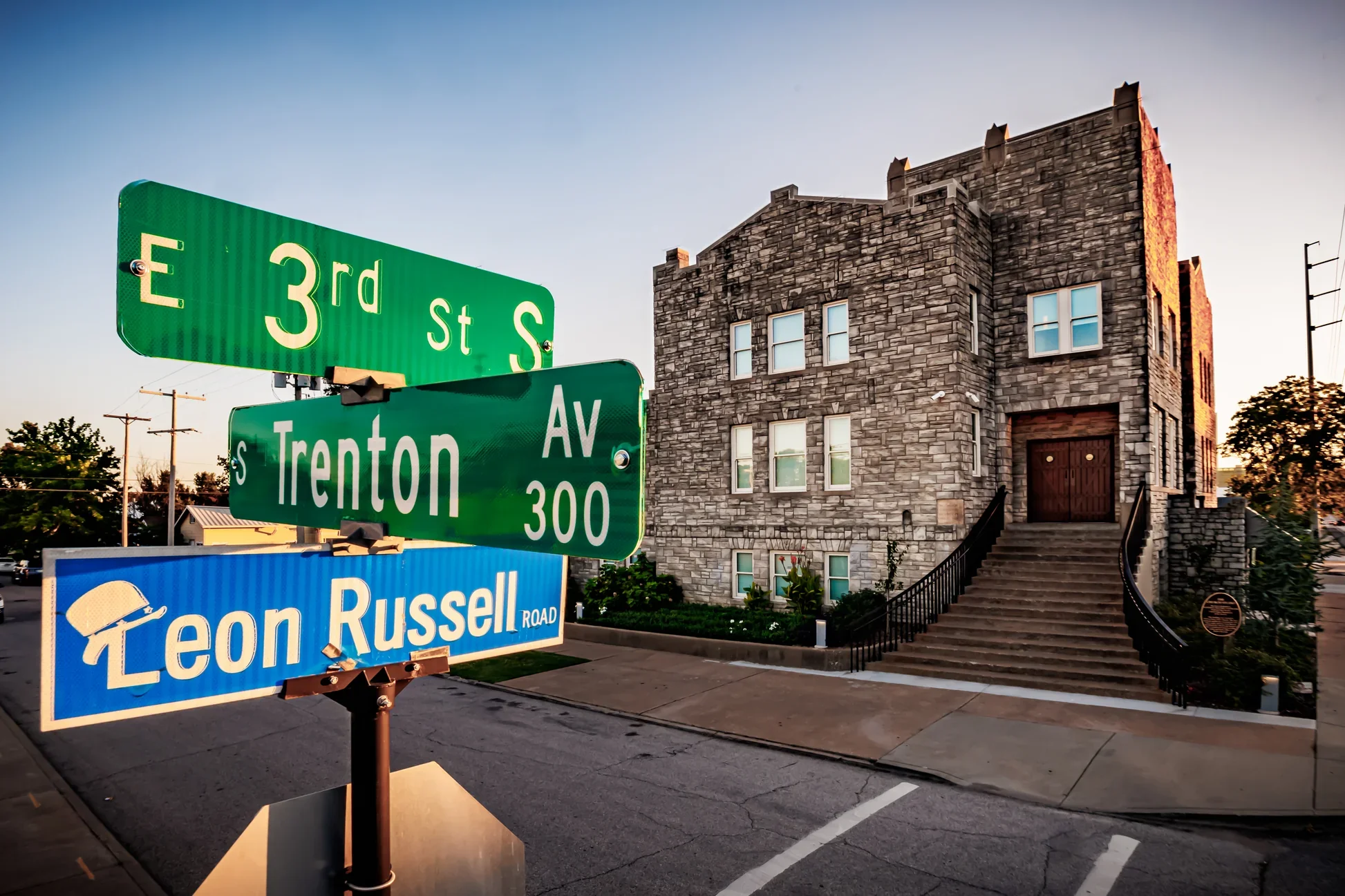From The Church Studio to Wild Mountain
Leon Russell, Unknown Tone Records, and a Tulsa Sound Story, 2008–2016
Now known as composers and producers dedicated to ambient, experimental, and orchestral music, Anjelica Lindsey and Mark Kuykendall trace their roots to a formative era over 15 years ago—before they built Wild Mountain Studios and made their studio home at Leon Russell’s Church Studio when their work centered on grassroots advocacy, underground creativity, and a shared vision for a more musical, culturally aware Tulsa. This is a glimpse into that early chapter alongside Mark Kuykendall, one that helped shape the path as two composers and as co-owners of Wild Mountain Studios today.
Through their work, they aim to convey steadfast support for Tulsa’s artistic ecosystem, honor the lasting legacy and ongoing revitalization of the Church Studio, and advocate for continued investment in the city’s musical infrastructure to ensure future generations can create, innovate, and belong.
FROM Organum Records to Unknown Tone
Between 2008 and 2010, Organum Records emerged as a vital Tulsa artist collective. Founded by Anjelica Lindsey and Mark Kuykendall, a new-for-its-time artist-led collective format record label, Organum Records became a crucible for some of the city’s most forward-thinking experimental jazz, classical composition, and underground art. Organum was a space without pretense, a house-show haven turned exhibition gallery, where scores were passed hand to hand, spontaneous ensembles formed, and audiences experienced work that defied genre and convention. It was a home for creative misfits and sonic explorers; artists who didn’t fit into the standard music industry machinery but thrived in conversation with one another.
This era catalyzed a new direction for Mark Kuykendall and Anjelica Lindsey, who met through these artistic intersections in January, 2007. The atmosphere of Organum inspired the pair to deepen their work together, eventually founding their own ambient, experimental, and neo-classical label: Unknown Tone Records. The label was joined by a sister entity, Unknown Tone Studio, an in-house recording space and production arm designed to serve the emerging needs of artists working in the ambient and electro-acoustic landscape.
Pictured above: Organum Records Artist Collective, for Urban Tulsa Weekly 2008, L to R: Paul Benjaman, Anjelica Lindsey, Jesse Aycock, Matt Hayes, [unknown], Dylan Aycock, Josh Raymer, Clay Welch, Andrew Bones, Chris Combs, Bo Hallford, Mark Kuykendall
The Church Studio
As their vision grew, so did their reach. Between 2008-2011, Unknown Tone found a new home inside the legendary Church Studio in Tulsa, under the building ownership of Randy Miller and his son, Jacob Miller, with a later iteration combining equipment with producer Michael Block. While housed there, Kuykendall and Lindsey recorded and produced numerous albums, cultivating a new layer of sonic history within the same walls once walked by Leon Russell, JJ Cale, GAP Band, Tom Petty, Steve Ripley, and so many more.
Anjelica Lindsey recording violin in The Church Studio, 2010
Projects during that time included Lindsey’s then-forthcoming album Rivers Rising, Weaving Spiders Come Not Here by The New Honey Shade, as well as works by the ensemble Cecada led by Brian Rawson. The studio during that era also facilitated a recording site for many others, including Jesse Aycock and the ever-innovative Jacob Fred Jazz Odyssey.
Church Studio business card, 2010.
Mark Kuykendall and Anjelica Lindsey selection of studio gear in Church Studio, 2010
Leon Russell Road
Pictured: Leon Russell Road sign, designed by Anjelica Lindsey screenshot as seen on CBS Sunday Morning, 2010
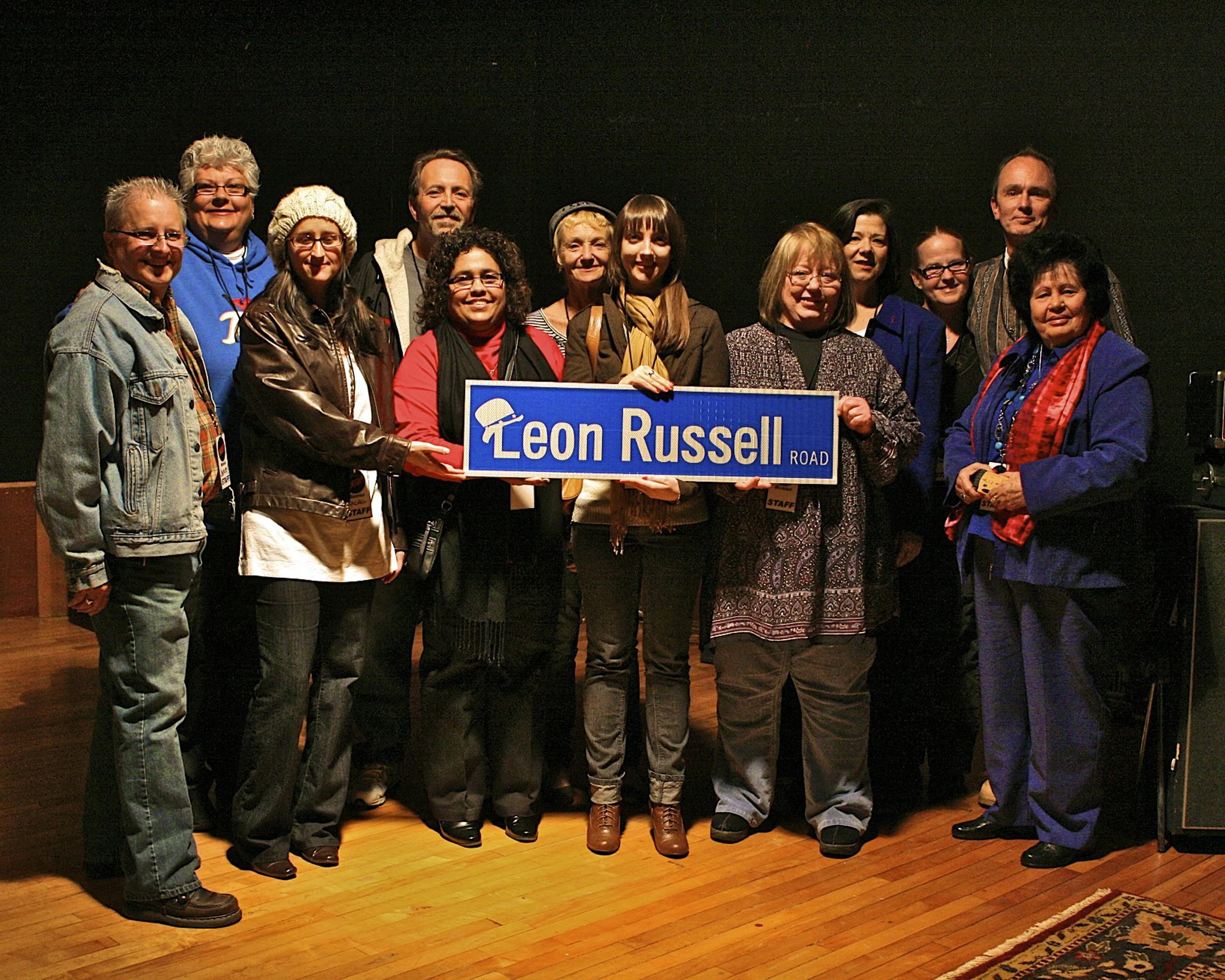
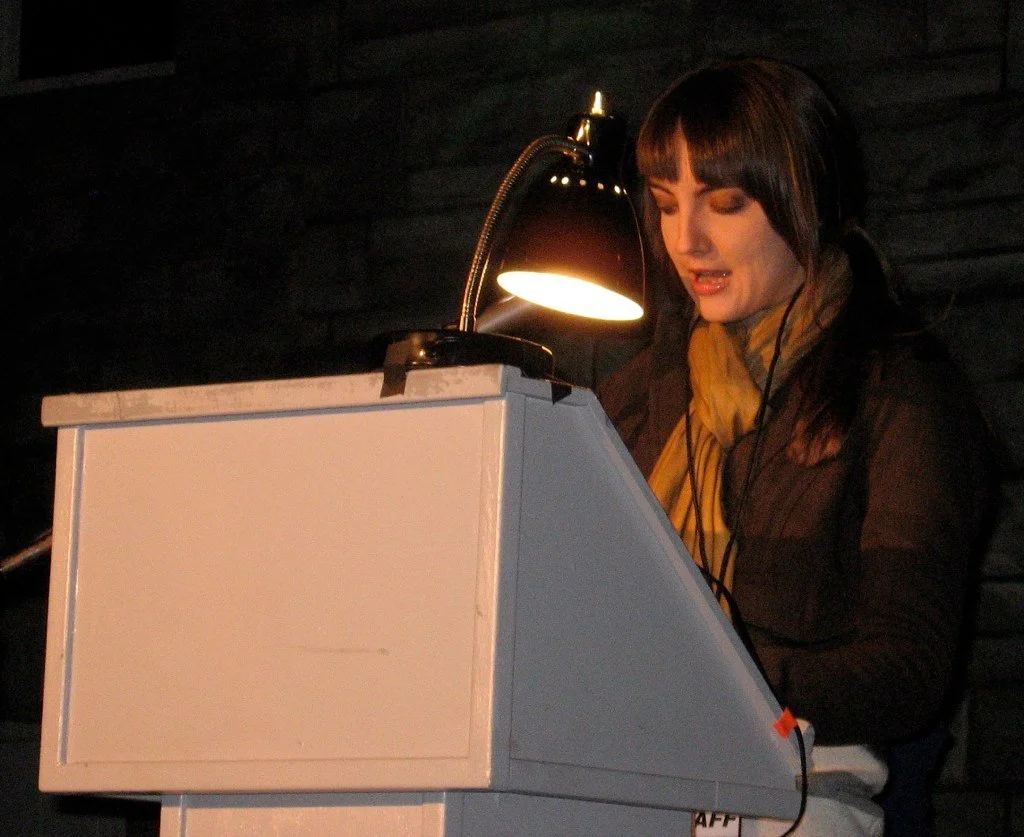
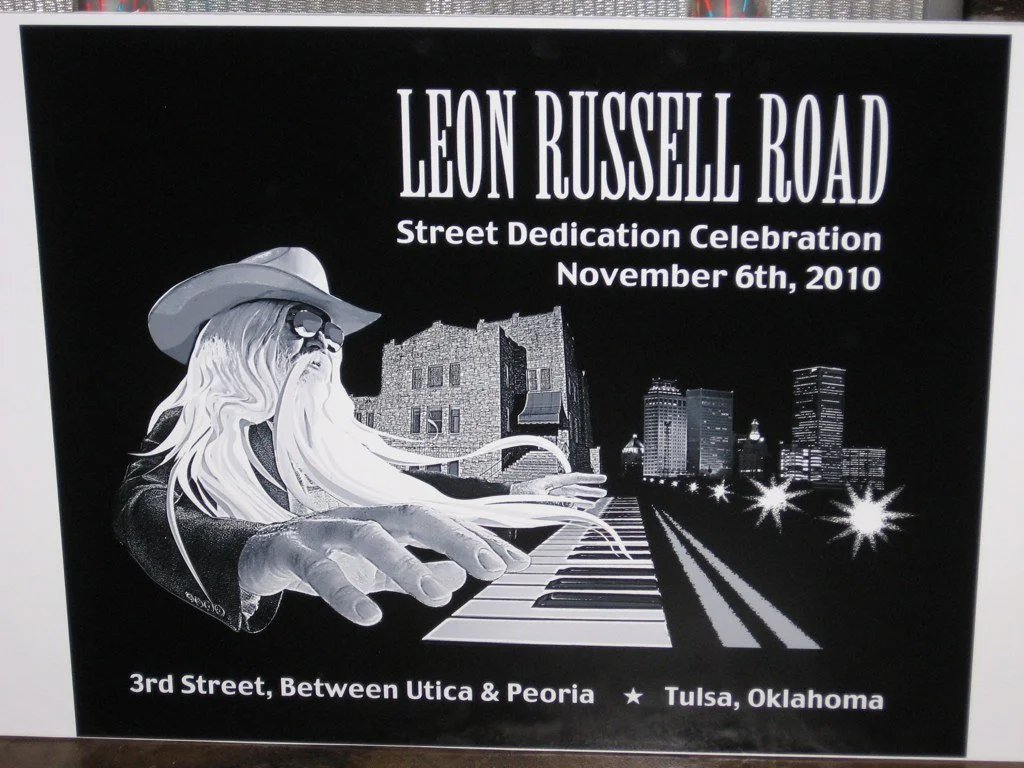
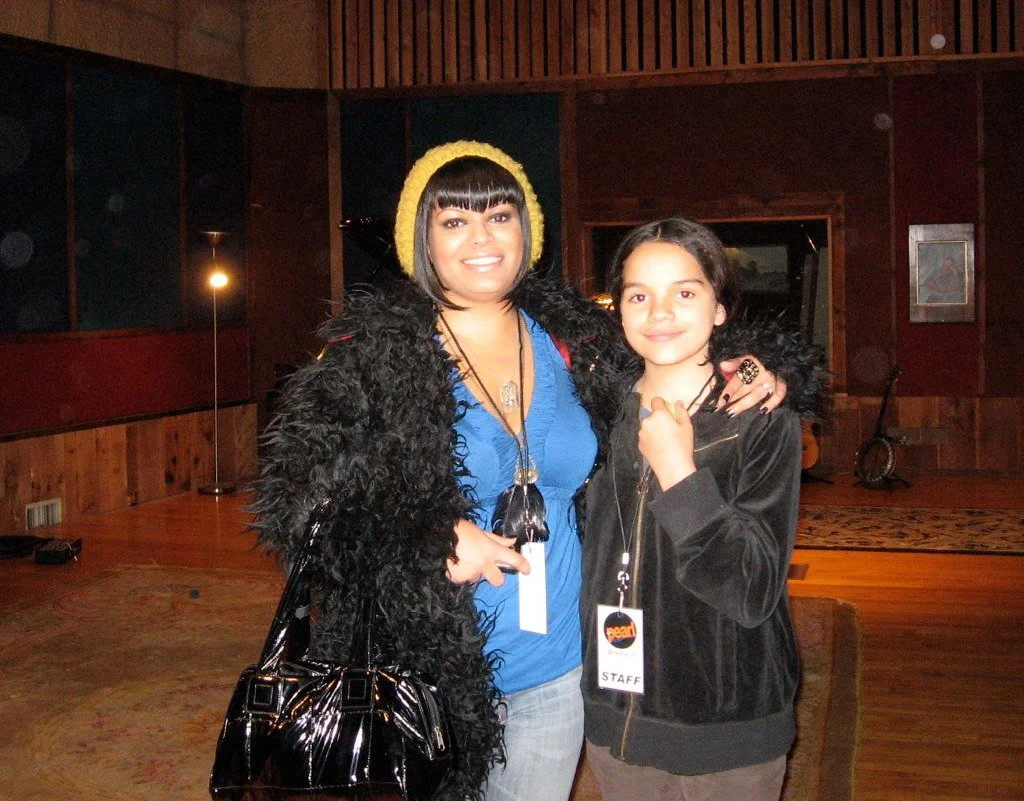
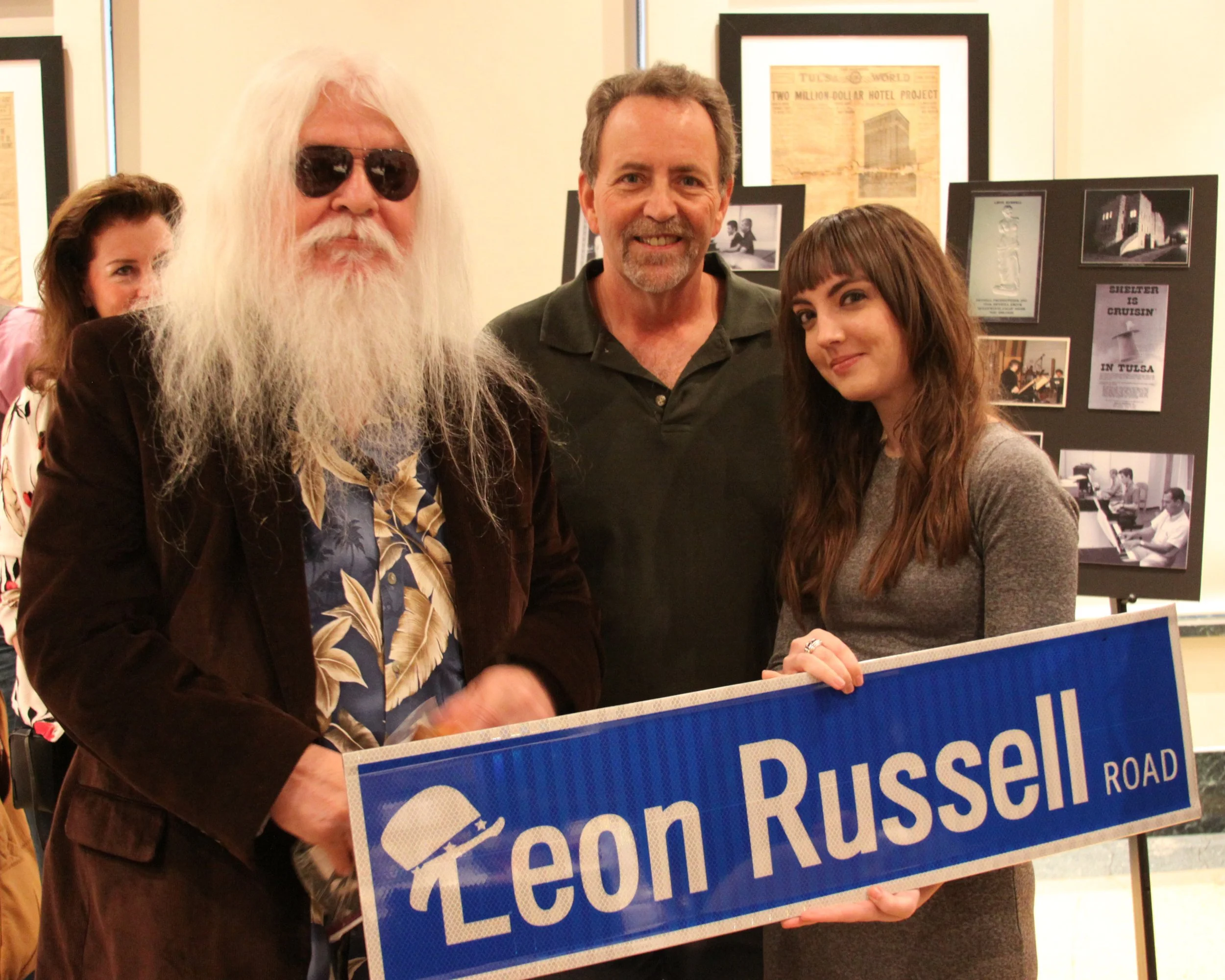
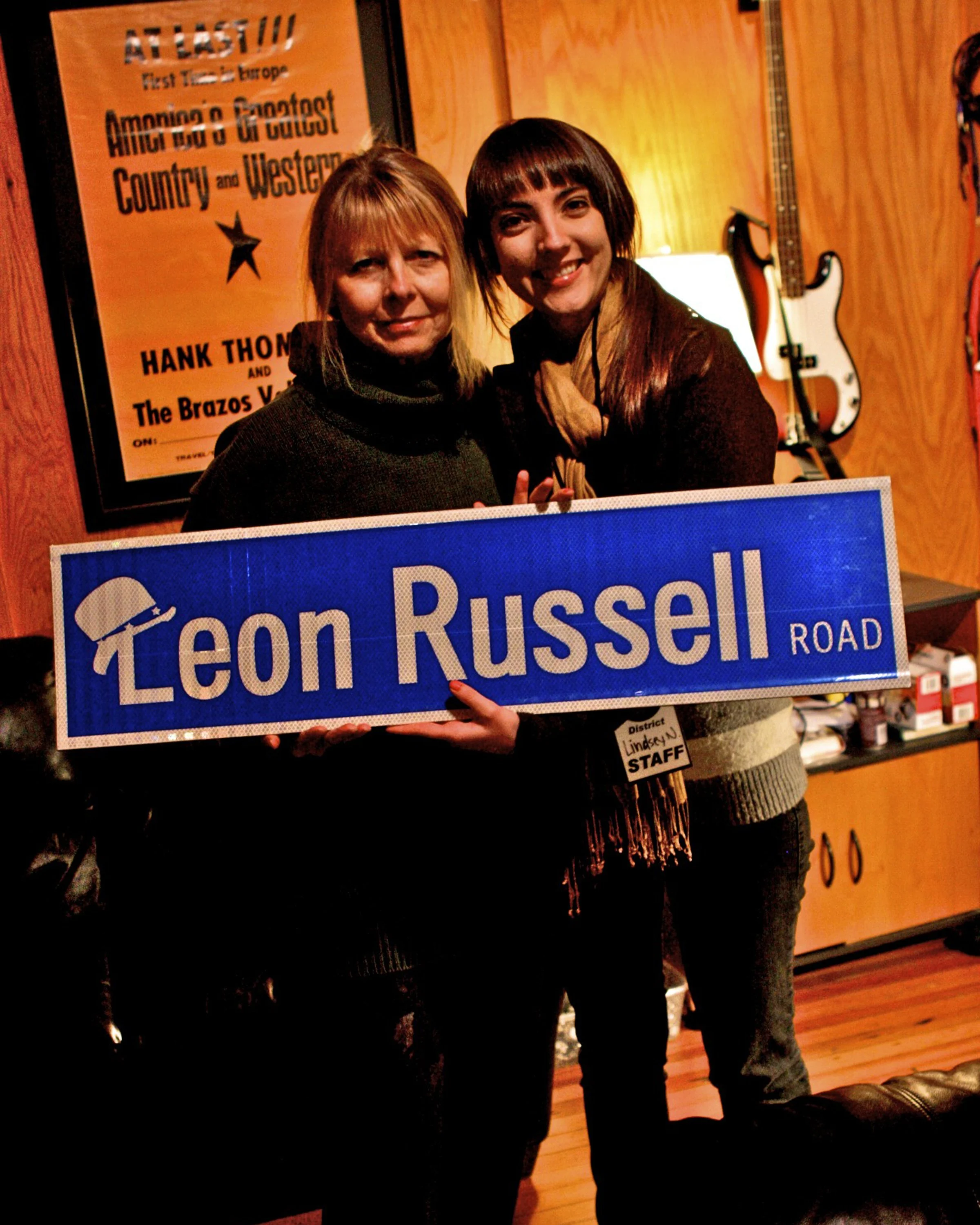
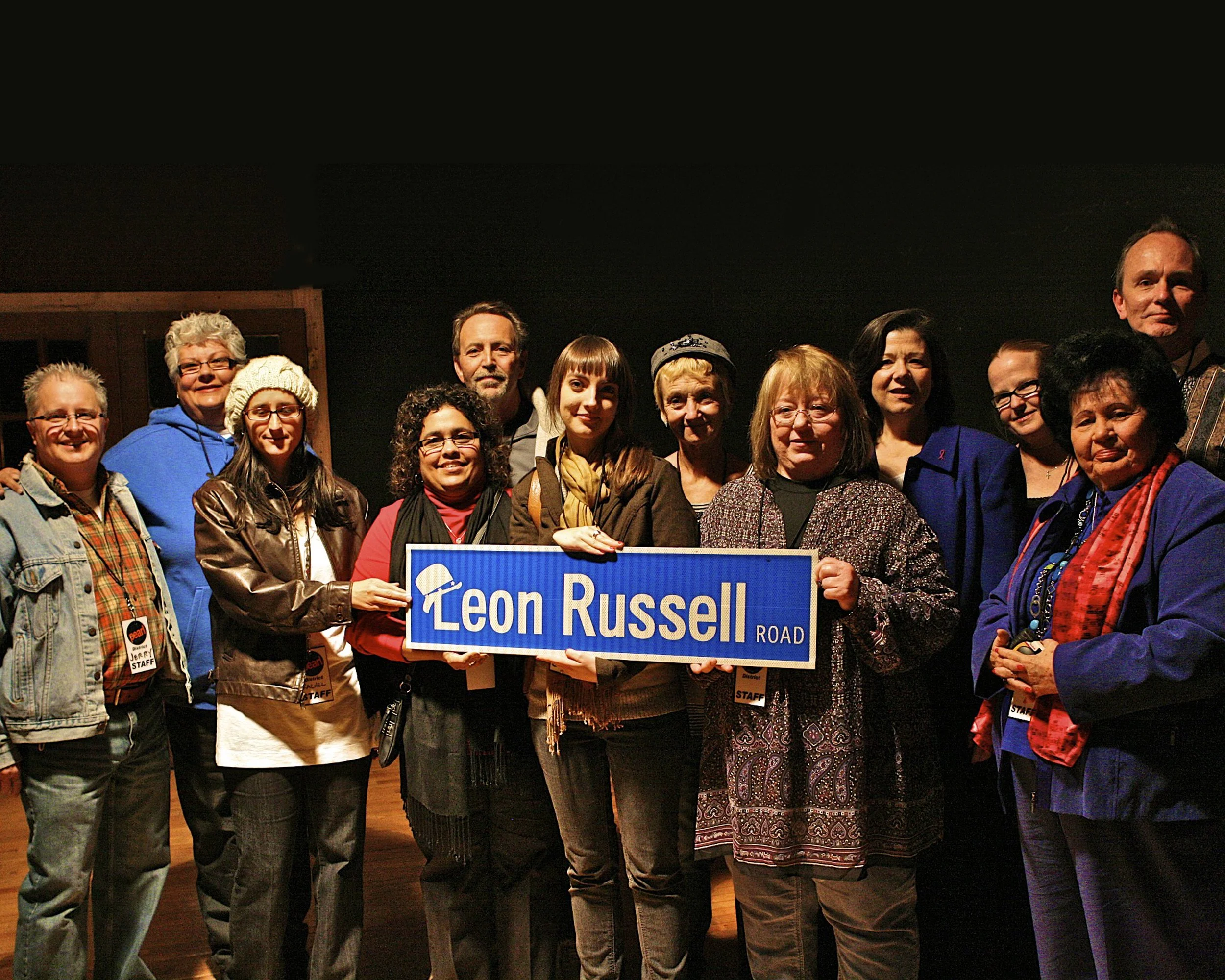
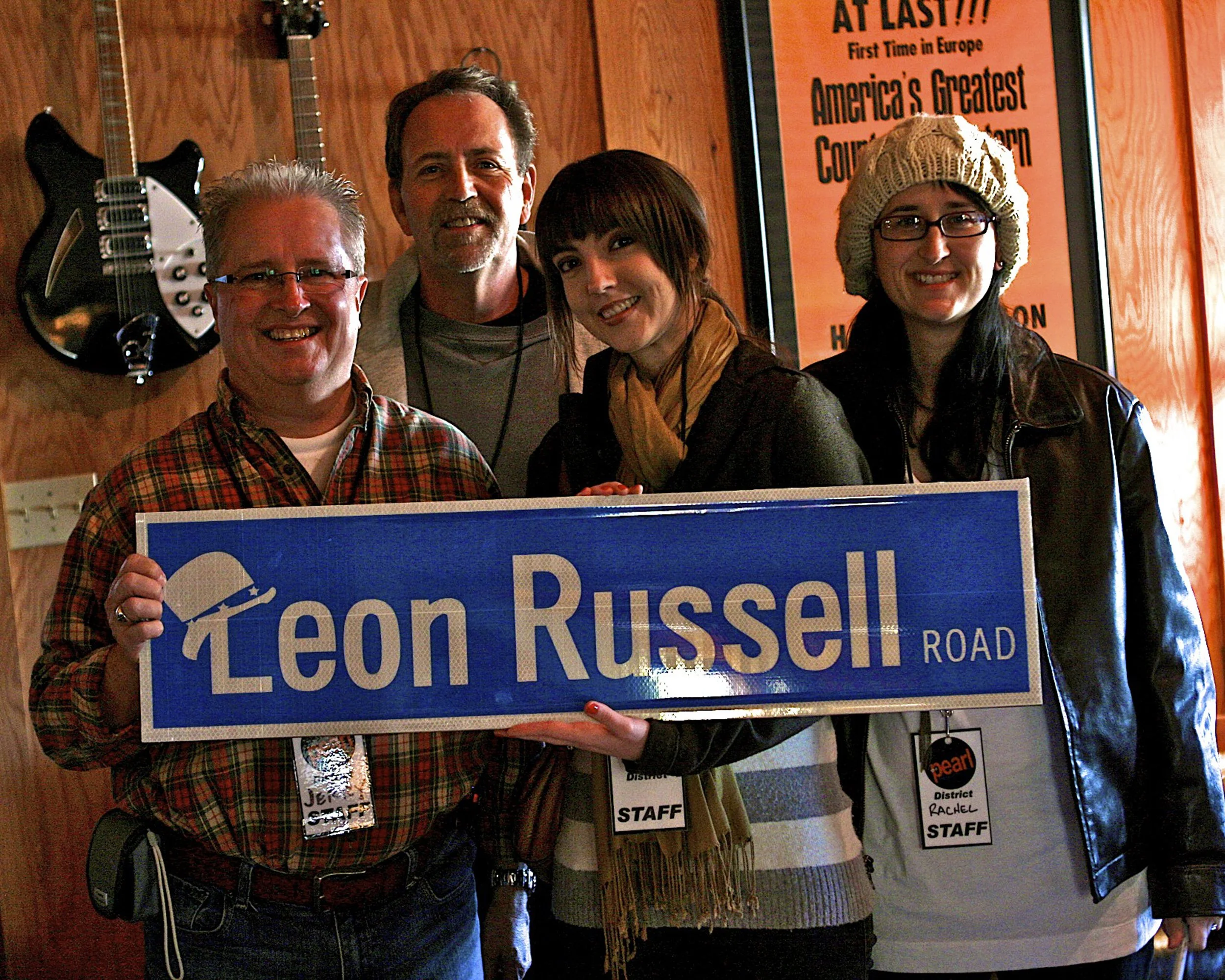
Pictured above: The Pearl District Association, Tulsa Area Music Archives, and Russell Family members celebrating Leon Russell Road at Mayo Hotel, The Church Studio, and the Street Dedication Ceremony on November 6, 2010 at The Church Studio
Beyond music production, this was a time of cultural advocacy and community building. Anjelica Lindsey represented The Church Studio on the Pearl District Association Board, where she initiated and led the successful campaign to rename a portion of the street Leon Russell Road in honor of the Tulsa music legend, designing the sign itself and leading the initiative. The unveiling ceremony and Festival included a city-wide celebration in collaboration with a street festival curated by Lisa Regan (Garden Deva) and a formal banquet attended by Leon himself hosted by Steve and Kathy Todoroff, an event later featured on CBS Sunday Morning.
Christine Booth, a fellow board member of The Pearl District Association, added her own creative touch to the Leon Russell Road sign design by placing Leon’s signature hat hanging on the “L,” turning the project into a meaningful collaboration between friends, women and a visual tribute to Leon’s unmistakable style.
Below photos courtesy, Tulsa World, 2010. Photos include Pearl District Association Board and Members Dave Strader, Christine Booth, Lorenda Stetler, Rachel Navarro, Jerry Bowen, City Councilor Maria Barnes, and Leon Russell family and stakeholders including Tina Rose and her daughter, China, Leon Lifer Honey Colburn, and musicians Johnny Williams and Chuck Blackwell.
Leon, in his characteristic dry humor, expressed one concern: that someone might steal the street signs. To prevent this, Lindsey had them installed with special tamper-proof bolts—a detail that speaks to the blend of reverence and realism that marked this era.
CBS Sunday Morning Show
Pictured: Leon Russell and Steve Todoroff at Mayo Hotel, by Mark Kuykendall
Among the most devoted stewards of Leon Russell’s legacy was Steve Todoroff, longtime archivist and founder of the Tulsa Area Music Archives (TAMA) and the Steve Todoroff Archives. Over the years, Steve meticulously preserved Leon’s history, ultimately making his expansive collection available to the forthcoming OKPOP Museum. He also kept Leon’s spirit alive in real time, organizing the annual Leon Russell Birthday Bash concerts at the historic Brady Theater (now the Tulsa Theater) and hosting the celebratory Leon Russell Banquet with his wife Kathy at the Mayo Hotel.
Enjoying himself at the banquet, Leon joked that he’d continue taking photos with fans in attendance, saying, “As long as I don’t have to get a real job!”
It was at that banquet that Steve introduced Mark Kuykendall to Leon as “the next Leon Russell,” to which Leon quipped, “I hope that doesn’t offend you!”
In a quieter moment, when Lindsey asked Leon what it had been like to be invited by Elton John for a collaborative album and tour, Leon answered with surprising gravity: “Elton John is the most spiritually correct person I’ve ever met.”
Pictured: Elton John live at BOK Center, Tulsa, Oklahoma, the evening of the Mayo Hotel Banquet, photo by Anjelica Lindsey
The Church Studio also became a gathering place for intellectual and historical inquiry. Historian and cultural provocateur Lee Roy Chapman, then a contributing editor for This Land Press, collaborated with both Kuykendall and Lindsey, also a contributing editor. Chapman and Kuykendall co-created a film about Route 66 and the White Dove Review, an iconic Tulsa-based poetry publication of the 1950s. Lindsey and Chapman, meanwhile, documented Tulsa’s musical and cultural undercurrents in print as contributing editors at This Land. Chapman, now partially portrayed by Ethan Hawke in Sterlin Harjo’s FX series The Lowdown, was an essential figure in preserving and challenging narratives of Tulsa history through his Center for Public Secrets. His presence added a critical dimension to the creative ecosystem of the time.
Anjelica Lindsey and Mark Kuykendall regularly hosted intimate studio visits to the Church Studio with local stakeholders, including historian Lee Roy Chapman’s first enthusiastic visit, where conversations wove together Tulsa’s hidden histories, music, and the evolving vision for the space’s future.
Above: Articles in This Land by Anjelica Lindsey, and Mark Kuykendall and Anjelica Lindsey at Unknown Tone Studio, and Mark Kuykendall as recording engineer with Stan Reed, Steve Pryor, Jamie Oldaker, and Wayne White
This period at the Church Studio was a moment of underground glory in Tulsa’s music history. It predated much of the mainstream recognition Tulsa would later receive for its creative institutions. In those years, independent artists were laying the groundwork, fusing preservation with experimentation, honoring legacy while forging new paths.
Mark Kuykendall (The New Honey Shade) and Anjelica Lindsey, 2010, Photo by Michael Cooper
Revival and Vision:
Teresa Knox and the Future of the Church Studio
Organum Records and Unknown Tone may have sparked a fire, but the Leon Russell Road campaign carried it forward, transforming a moment into a movement, and building a body of work that continues to ripple through Tulsa’s cultural life. The successful campaign to name Leon Russell Road by Anjelica Lindsey and the Pearl District Association was a symbolic gesture that became a catalyst. The excitement surrounding the unveiling ceremony and festival, the celebratory banquet attended by Leon himself and broadcast nationally on CBS Sunday Morning, reignited Tulsa’s imagination around what the Church Studio could be. In honoring Leon's legacy, the city also began to remember what the studio had meant and what it could mean again.
This moment of public celebration stirred a renewed sense of possibility. The momentum that followed helped pave the way for the building’s future restoration and transformation into a world-class recording and cultural center with new owner Teresa Knox at the helm.
Pictured: 2017, Anjelica Lindsey and Mark Kuykendall with the subsequent owners of Church Studio, Teresa and Ivan Knox, who led a massive renovation and addition to the studio, giving The Church Studio renewed life into its current era and the future.
Anjelica Lindsey first connected with Teresa Knox when Teresa’s successful effort to place the Church Studio on the National Register of Historic Places cited Lindsey’s research and work as part of the application. That recognition sparked a series of conversations about the future of the Church, during which Lindsey suggested the idea of involving producers like Daniel Lanois to help shape its next chapter. Shortly afterward, Teresa purchased the studio’s vintage Neve board directly from Lanois, marking a new phase in the studio’s revival.
From The Church Studio: Your feedback was essential in the assembling of the research needed to apply for recognition granted by the National Register of Historic Places. Without this insight, “first hand” recollection, relevance, and knowledge—both observed and learned—the nomination would have been incomplete. The period of significance for the historical recognition as well as the impactful contribution to American music and to the “Tulsa Sound;” is documented between the critical years of 1972 to 1976.
When Anjelica Lindsey met with Teresa Knox to strategize the future of the Church Studio, she suggested incorporating its story into the backstage areas of the BOK Center, where touring artists and crews from across the globe pass through.
That idea eventually came to life, and today the backstage walls proudly feature Leon Russell Road, connecting the venue’s international reach with Tulsa’s own musical heritage.
In many ways, the renaming of that modest stretch of road was the spark that lit a much larger flame that illuminated the Church Studio’s next era and cast new light on the creative forces quietly working within its walls.
Teresa Knox’s book, Sanctuary of Sound, represents the most comprehensive historical account of the Church Studio to date. Through years of dedicated research, rare archival materials, and personal interviews, Knox has assembled a rich and nuanced portrait of the studio’s origins, its cultural significance, and the artists who helped shape its legacy.
Inspired by Leon Russell’s clever, uncompromising approach to life and art, Leon Russell’s spirit in part inspired Wild Mountain Studios, where Kuykendall and Lindsey continue to serve the community and create original compositions, always with the hope of contributing to Tulsa’s enduring and evolving musical legacy.
Read more about The Making of Leon Russell Road by Anjelica Lindsey at The Church Studio website.
Read more about Building Wild Mountain Studio here.






